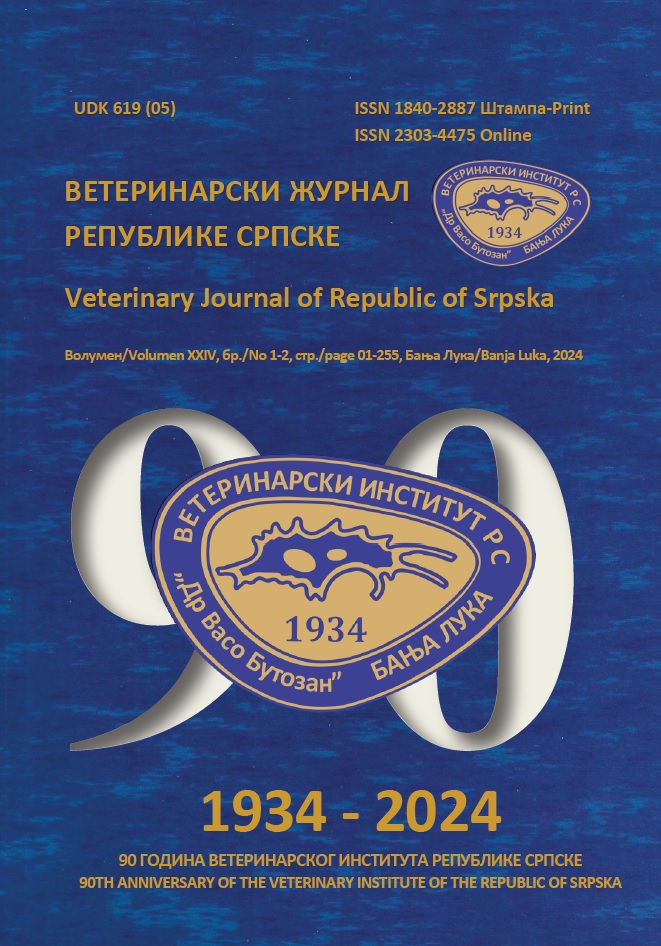FREQUENCY OF REPRODUCTIVE DISORDERS IN DOGS
DOI:
https://doi.org/10.7251/VETJEN2401176GAbstract
Diseases and reproductive tract disorders are common in clinical veterinary practice, and the possibility of applying therapy plays a key role for future offspring. The awareness of pet owners about the health status of their animals has changed significantly in recent years. On the other hand, due to the changed way of keeping dogs, they are more prone to various health disorders, including reproductive health disorders. When examining the reproductive status of dogs, it is always necessary to take a detailed history of reproductive health. In this retrospective study, data taken from 95 dogs with reproductive tract pathology were analyzed. In addition to the most common reproductive disorders, some rare congenital pathological conditions were also detected in these dogs. The highest frequency of reproductive pathology was recorded in females (73%), followed by males (22%), while neonatal patients were least affected by this type of pathology (5%). Surgical intervention was performed in 71% of cases, while pharmacotherapy was used in 24% of patients. In cases of neonatal disorders, only the death of the puppy was noted (5% of cases). The reproductive history of the bitch, the male and the litter can provide excellent guidelines for the existence of a genetic predisposition to the development of sterility. Therefore, this retrospective study was conducted with the aim of presenting different reproductive disorders, possible therapies for different disorders, but also the incidence of their occurrence in relation to gender and age. Overall, the problems that most often occur in veterinary practice, and relate to the pathology of canine reproduction, remain similar for a long period of time. A positive effect in such disorders can be found in quick and easy diagnosis, but also in increasingly modern methods for their correction.

